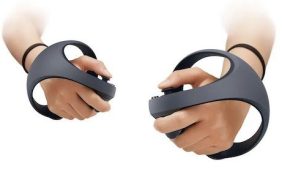It’s going to be an incredibly busy final quarter of the year for tech, with a variety of new hardware launching at the tail-end of the year for us to throw our wallets at.
October looks set to be particularly busy, and for our first Tech We Crave column of the month there has been a lot of products we’ve had to overlook in favor of the following three devices. From Google’s first ever smartphone through to two upcoming, exciting virtual reality headsets, here’s the Tech We Crave this week:
Google Pixel and Pixel XL

During last week’s Made By Google event, the search engine giant revealed its first smartphone in the form of the Pixel and its premium counterpart, the Pixel XL. Aesthetically it shares a lot in common with Apple’s iPhone, but it’s what’s under its hood that has got many people excited.
Google claims that the Pixel features the highest quality smartphone camera ever, a statement backed up by DxOMark‘s 89 rating, with the leading camera analysts echoing Google’s boasts. The quality of this 12MP camera took up a significant portion of the company’s presentation, with it touching upon its swift autofocus, impressive color balance and low-light performance, highlighting a selection of images that helped bolster this claim. The Pixel phones are also able to shoot 4K video.
Along with its impressive camera, the Pixel will feature a 5-inch AMOLED display with a quad-core 2.0GHz 64-bit processor, while the high-end Pixel XL’s display measures in at 5.5-inches and features a quad-core Qualcomm processor. Both devices run with 4GB RAM, and they also boast the same 12-megapixel rear camera and 8-megapixel front-facing camera for all of your glorious selfies.
The Google Pixel will be released on October 20 for $649, while the Pixel XL will launch on the same day for $770.
PlayStation VR

I’ve been very critical of PlayStation VR in the past, and in many respects I’m still not convinced that the headset will have justified its high price point when early adopters such as myself look back on it a year from now. As I have previously touched upon, my concern for the PSVR mainly revolves around Sony’s track record with supporting its gaming peripherals, with the company having an unfortunate history of dropping its support of hardware with an unparalleled swiftness. You need look no further than the PSVR’s accessories to see evidence of this, with the Move controllers having been all but abandoned only a few months after launch, and the PS4’s camera being practically ignored by the company from the get-go.
However, despite these reservations I’m still looking forward to getting my hands on the PSVR, largely because of the accessibility it affords the user over competing VR headsets. Whereas the Oculus Rift would require my to overhaul my PC and the HTC Vive would need me to rent out a bigger office, the PSVR will simply connect to my PS4 and allow me to enjoy VR games that, while not as technically proficient as their Rift/Vive peers, offer a semblance of that experience for a much more affordable price point.
Early impressions indicate that the PlayStation VR is impressive and could well help virtual reality infiltrate the mainstream, if Sony manages to support it with full gaming experiences. Its launch line-up is mainly just a selection of products that help users get to grips with the new technology, from the compilation game PlayStation VR Worlds through to the short-but-sweet Batman: Arkham VR. Hopefully in the future it will receive some more robust titles that VR gamers can really sink their teeth into, but for the time being I can acknowledge that it’s a very promising new piece of hardware, even if I continue to remain cautiously skeptical of it.
DayDream View

We’re featuring two VR headsets this week, because after the DayDream View’s presentation at last week’s Made By Google event it’s impossible to refrain from discussing the new Android virtual reality HMD.
Also See: What You Need to Know About Google’s DayDream View
Google enjoyed a surprising level of success with its Google Cardboard, a very low-budget headset that allowed for primitive VR experiences using Android smartphones. The company has built upon this concept with the DayDream View, a new headset that while more expensive than its predecessor, is still much more affordable than its other contemporaries and looks set to offer the best entry-level VR experience yet.
The DayDream View manages to boast a lower price point by way of solely using its compatible smartphones as its hardware, with Google developing a DayDream OS for Android phones that will enable more and more devices to support the VR headset. This means that the DayDream View itself doesn’t need to pack any extra power, which sets it apart from the likes of Samsung’s Gear VR and means it can retail for a low price of $79.
Another advantage boasted by the DayDream View over other mobile VR headsets is that it will ship with a controller, allowing extra functionality for users and enabling developers to really think outside of the box when it comes to developing VR apps and games for the platform. Though the controller features a simple, two-button design, its inclusion puts the DayDream View a step ahead of its rivals, and will ensure that there will be a greater variety of mobile VR experiences following its launch in early November.







